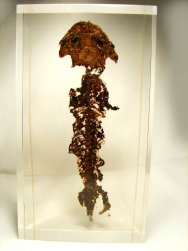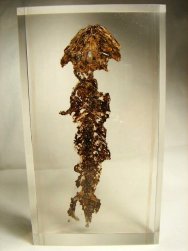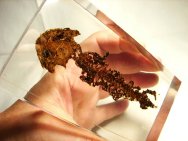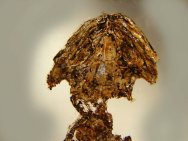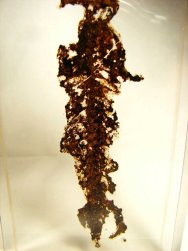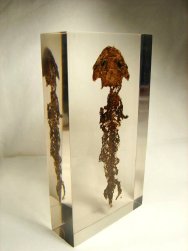 Description:
This is a fine example of a rarely seen amphibian known as Discosauriscus.
While also known as Letoveterpeton, that name has been considered
a junior synonym. While once thought to be either a reptile or an
amphibian, the fact that examples are now known from the gilled
larval state places it firmly with the Amphibia. Given its affinities
with the North American Seymouria, it may have had a similar reptile-like
appearance as a mature adult. It is placed here in the Reptile section
of the mall as amphibians are almost never offered. Description:
This is a fine example of a rarely seen amphibian known as Discosauriscus.
While also known as Letoveterpeton, that name has been considered
a junior synonym. While once thought to be either a reptile or an
amphibian, the fact that examples are now known from the gilled
larval state places it firmly with the Amphibia. Given its affinities
with the North American Seymouria, it may have had a similar reptile-like
appearance as a mature adult. It is placed here in the Reptile section
of the mall as amphibians are almost never offered.
What
is most unusual about this specimen is that it has 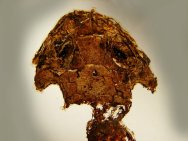 been
painstakingly prepared free of matrix to show only the skeletal
and soft tissue of the animal itself. This is a laborious process
that involves mechanical removal of matrix, flowed by digestion
with acid. The exposed elements are then protected and the process
iterated numerous times before the finished specimen is embedded
in a UV-resistant resin for display. Given there is an 80-90 percent
reject rate during the process few finished specimens are ever offered.
While expensive, when one considers some 250-300 man-hours over
a period on 20 to 30 weeks the price is not that outlandish. been
painstakingly prepared free of matrix to show only the skeletal
and soft tissue of the animal itself. This is a laborious process
that involves mechanical removal of matrix, flowed by digestion
with acid. The exposed elements are then protected and the process
iterated numerous times before the finished specimen is embedded
in a UV-resistant resin for display. Given there is an 80-90 percent
reject rate during the process few finished specimens are ever offered.
While expensive, when one considers some 250-300 man-hours over
a period on 20 to 30 weeks the price is not that outlandish.
This
particular example shows the skull and most of the articulated postcranial
elements including parts of the limbs. On the dorsal side of the
skull you can make out the centrally-located “third eye”.
Known more accurately as the pineal or parietal eye. It possessed
a cornea, lens and a retina, and predominantly served a photoreceptive
function most likely tied to the circadian rhythm. Many reptiles
and amphibians still possess a rudimentary “third eye’
today. There is also some skin adhering to the bones which probably
helped keep the specimen in an articulated state.
See
other Discosauriscus fossil specimens here
and here.
|


